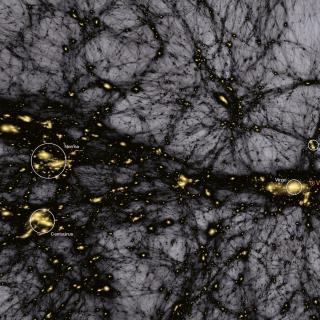Bibcode
Ata, M.; Baumgarten, Falk; Bautista, Julian; Beutler, Florian; Bizyaev, Dmitry; Blanton, Michael R.; Blazek, Jonathan A.; Bolton, Adam S.; Brinkmann, Jonathan; Brownstein, Joel R.; Burtin, Etienne; Chuang, Chia-Hsun; Comparat, Johan; Dawson, Kyle S.; de la Macorra, Axel; Du, Wei; du Mas des Bourboux, Hélion; Eisenstein, Daniel J.; Gil-Marín, Héctor; Grabowski, Katie; Guy, Julien; Hand, Nick; Ho, Shirley; Hutchinson, Timothy A.; Ivanov, Mikhail M.; Kitaura, F.-Sh.; Kneib, Jean-Paul; Laurent, Pierre; Le Goff, Jean-Marc; McEwen, Joseph E.; Mueller, Eva-Maria; Myers, Adam D.; Newman, Jeffrey A.; Palanque-Delabrouille, Nathalie; Pan, Kaike; Pâris, Isabelle; Pellejero-Ibanez, M.; Percival, Will J.; Petitjean, Patrick; Prada, Francisco; Prakash, Abhishek; Rodríguez-Torres, Sergio A.; Ross, Ashley J.; Rossi, Graziano; Ruggeri, Rossana; Sánchez, Ariel G.; Satpathy, Siddharth; Schlegel, David J.; Schneider, Donald P.; Seo, Hee-Jong; Slosar, Anže; Streblyanska, A.; Tinker, Jeremy L.; Tojeiro, Rita; Vargas Magaña, Mariana; Vivek, M.; Wang, Yuting; Yèche, Christophe; Yu, Liang; Zarrouk, Pauline; Zhao, Cheng; Zhao, Gong-Bo; Zhu, Fangzhou
Bibliographical reference
Monthly Notices of the Royal Astronomical Society, Volume 473, Issue 4, p.4773-4794
Advertised on:
2
2018
Citations
412
Refereed citations
369
Description
We present measurements of the Baryon Acoustic Oscillation (BAO) scale
in redshift-space using the clustering of quasars. We consider a sample
of 147 000 quasars from the extended Baryon Oscillation Spectroscopic
Survey (eBOSS) distributed over 2044 square degrees with redshifts 0.8
< z < 2.2 and measure their spherically averaged clustering in
both configuration and Fourier space. Our observational data set and the
1400 simulated realizations of the data set allow us to detect a
preference for BAO that is greater than 2.8σ. We determine the
spherically averaged BAO distance to z = 1.52 to 3.8 per cent precision:
DV(z = 1.52) = 3843 ± 147(rd/rd,
fid)Mpc. This is the first time the location of the BAO feature
has been measured between redshifts 1 and 2. Our result is fully
consistent with the prediction obtained by extrapolating the Planck flat
ΛCDM best-fitting cosmology. All of our results are consistent
with basic large-scale structure (LSS) theory, confirming quasars to be
a reliable tracer of LSS, and provide a starting point for numerous
cosmological tests to be performed with eBOSS quasar samples. We combine
our result with previous, independent, BAO distance measurements to
construct an updated BAO distance-ladder. Using these BAO data alone and
marginalizing over the length of the standard ruler, we find
ΩΛ > 0 at 6.6σ significance when
testing a ΛCDM model with free curvature.
Related projects

Cosmology with Large Scale Structure Probes
The Cosmic Microwave Background (CMB) contains the statistical information about the early seeds of the structure formation in our Universe. Its natural counterpart in the local universe is the distribution of galaxies that arises as a result of gravitational growth of those primordial and small density fluctuations. The characterization of the
FRANCISCO SHU
KITAURA JOYANES